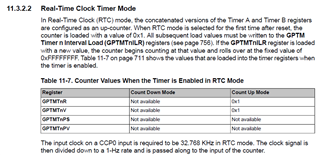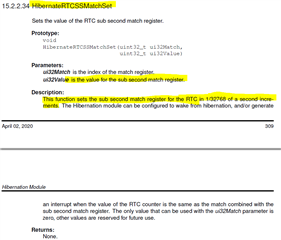Other Parts Discussed in Thread: EK-TM4C123GXL
Hello,
To count the clock cycles on a tm4c123gh6pm I have been doing:
// enable clock measurement HWREG(NVIC_DBG_INT) |= 0x01000000; // enable TRCENA bit in NVIC_DBG_INT HWREG(DWT_BASE + DWT_O_CYCCNT) = 0; // reset the counter HWREG(DWT_BASE) |= 0x01; // enable the counter uint32_t marker = HWREG(DWT_BASE + DWT_O_CYCCNT);Which is basically a counter with each clock cycle. Is there anyway I can intervene to overflow situation, like maybe trigger an interrrupt when overflow occurs?I would like to set a marker, when an overflow occurs, so that I later can calcuate real seconds, using this as an offset.Also, can someone point me the documentation for nvic? there is no reference to this at the datasheet.Best Regards,C.A.



